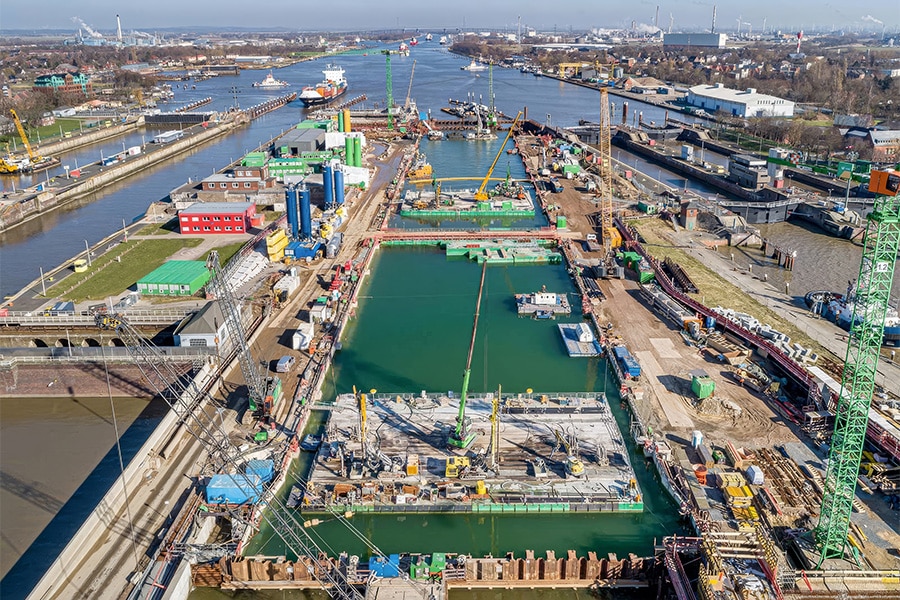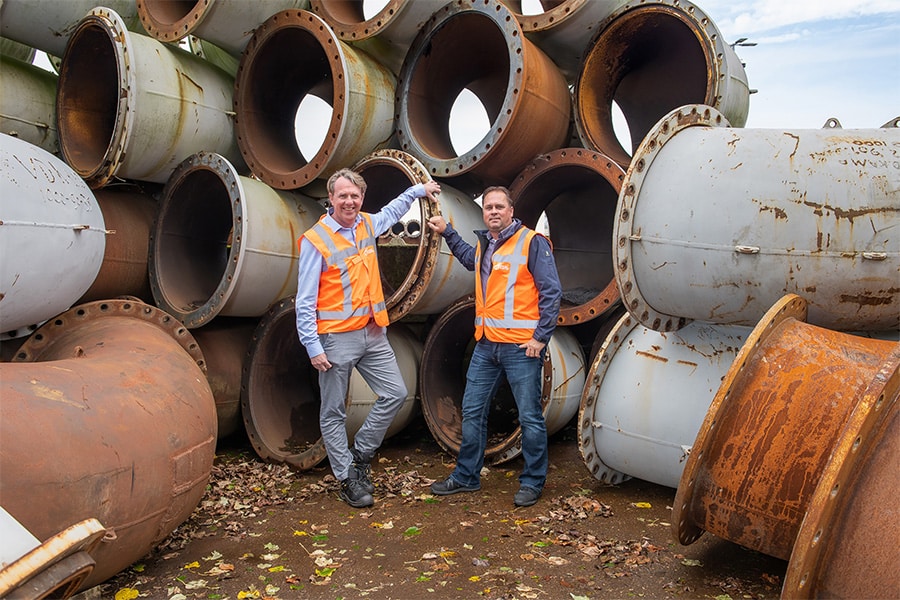
Steel preservation during the project
To the G-Force consortium's pilot at Het Singel, steel producer ArcelorMittal supplied 635 tons of tubular steel piles. Technical Sales Engineer Roel Bijlard says sustainability innovation will happen as the project progresses.
ArcelorMittal supplies pipes with a diameter of 508 mm and 9 mm wall thickness in lengths from 14 to 23 meters. That delivery takes place to the hub in Amsterdam-Noord. There, the tubes are still fitted with the ring bit by the consortium. The choice of long and short piles was made from the point of view of optimizing weight, costs and emissions. The short piles go up to the first sand layer, the long ones up to the second.
Roel: "The beauty of the system used is that the pipes are installed vibration-free in the ground through the existing structure. This limits the space required for the replacement of the quay wall, so there is less nuisance for local residents. Normally the installation causes vibrations, but in inner-city areas you quickly reach the limits of nuisance and possible settlements in the area. So this is a godsend for inner city quay walls, such as in Amsterdam's ring of canals. For soil and water retaining walls, vibration-free installation of sheet piling is already commonly used, for pipes it is less common."

Tube diameters
ArcelorMittal can supply all imaginable diameters and thicknesses of foundation pipes, there is no limit to that as far as they are concerned. "We are mainly known as a supplier of steel sheet piles and the larger pipe diameters, from 1 meter diameter and more. But also these smaller sizes fall within our product range," says Roel.
The Innovation Partnership Kademuren Amsterdam offers G-Force four to eight years of work. Over time, the design will be further innovated by the contractor combination. Roel: "As a supplier we can think along in this within the steel use, but above all we can innovate ourselves in making the steel production process more sustainable. This will continue to progress due to the long duration of the project and therefore be applied more and more."
Here, Roel is referring to ArcelorMittal's goal of producing carbon-neutral steel by 2050, in line with the Paris climate agreement. The biggest step towards this will be made when the blast furnace process is replaced by the DRI (Direct Reduced Iron) process. "We produce our own steel coils within the ArcelorMittal group and transform it into a tube in the Netherlands. Blast furnace steel has a fairly high CO2-emissions, as coal is used in the production process to bind the oxygen atoms in the iron ore. Within the current blast furnace process it is not possible to switch completely to gas or hydrogen. A different type of plant and installation is needed for that."

The DRI process can first run on natural gas (CH4) with which the CO2-emissions is already cut in half. This is a necessary intermediate step, due to a lack of availability of (green) hydrogen. The final step that comes next is the application of green hydrogen for carbon-neutral steel. A natural gas-fueled DRI plant can be converted to hydrogen with a minor modification."
Convert steel mills
"ArcelorMittal has set itself a reduction of 35% CO2-emissions by 2030 compared to 2018 as a goal," Roel explained. "Over the next seven years, we will convert a number of steel plants to DRI installations, so that is still within the contract period of the G-Power project. Because there will not be nearly enough green hydrogen available in the near future, we will switch to natural gas first. So by 2030, we will be able to use steel for the quay walls that, when produced, has half the CO2 emissions compared to now."
Heeft u vragen over dit artikel, project of product?
Neem dan rechtstreeks contact op met ArcelorMittal Projects Europe B.V..
 Contact opnemen
Contact opnemen




